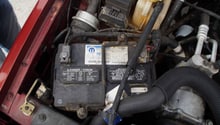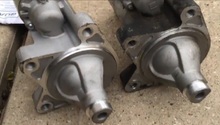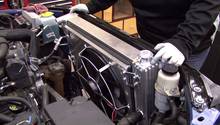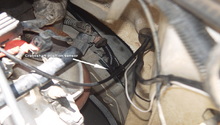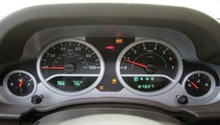Jeep Wrangler JK: Why Won't My Car Start?
An engine that cranks but fails to fire is disappointing, but a few simple tests for fuel and spark will usually uncover the problem. On the other hand, what steps should be taken when your engine will not crank over at all? Almost all no-start issues related to the JK Wrangler involve an engine that simply will not crank when you turn the key.
This article applies to the JK Jeep Wrangler (2007-Present).
The JK Jeep Wrangler uses a fair share of modern electrical system components. As with many other Chrysler vehicles, the JK utilizes a Total Integrated Power Module (TIPM) to control and communicate with many other systems throughout the vehicle. The TIPM, along with several other electrical system components, have been know to experience a few quirks that can prevent the engine from cranking over. While starting issues related to a lack of fuel or absence of spark can occur, 99% of all complaints related to a no-start condition on the JK Wrangler revolve around a starter motor that will not spin the engine to allow it to start. This article will outline several common areas that can be inspected to get your 2007 to present JK Jeep Wrangler up and running again.

Materials Needed
- Battery tester or digital multimeter
- Metric wrench set
- Fused jumper wire
- Battery charger
Step 1 – Check the battery
More often than not, a low or dead battery is the cause of a no-start condition in any vehicle. Batteries have a finite lifespan, with most factory batteries lasting approximately five years. Being exposed to regular temperature extremes (i.e. cold winter months) or not regularly driving the vehicle can take a heavy toll on the battery. In the case of the Wrangler, owners often drive off-road and traverse rough terrain, which can cause battery failure from excessive vibrations. Additionally, modern electronics and alarm systems equipped on cars also have a constant draw on the battery when it is not driven. With that being said, it is not uncommon for a battery to simply fail, even if it has been working flawlessly, and no longer hold a full charge. Keeping these things in mind, the first step to solving a no-start condition is to check the battery voltage.
- Using a battery tester or digital multimeter, measure the available battery voltage.
- If the battery is in a healthy state, voltage should read upwards of 12.0 volts. A fully charged battery holds a charge of 12.6 volts. A battery showing a significantly lower voltage level should be charged.
- If you have a battery tester on hand, placing a load on the battery can often indicate its condition. The battery should be at least 75% charged (12.4 volts) and a load placed on the battery for approximately 10 to 15 seconds. Excessive voltage drop will indicate a bad battery.
- Be sure the check the battery cables to ensure they are tightened securely to the battery posts or studs. Loose cables will not allow sufficient current to flow to the starter and crank the engine.

Pro Tip
If you do not have a battery tester or digital multimeter on hand, auto parts stores will usually test batteries for free.
If the battery is in good condition with a full charge but the engine will not turn over, proceed to Step 2.
Step 2 – Check ground straps
A common problem that leads to an intermittent or no-start condition on various JK models is corroded or broken ground straps. Ground straps are in place to allow electrical current to make its way back to the battery after it flows through various electrical components of the vehicle. The JK uses a ground strap that runs from the negative (black) battery terminal to the engine block/bell housing. This strap has been known to corrode and, in some cases, break. The starter uses a large amount of energy from the battery for proper operation, so any excessive resistance in the electrical circuit can cause starting issues. Inspect the condition of the ground strap(s) and ensure it is tight. Many experts agree that it never hurts to install an extra braided eight gauge ground strap to the chassis for electrical current to have a sufficient path to ground.
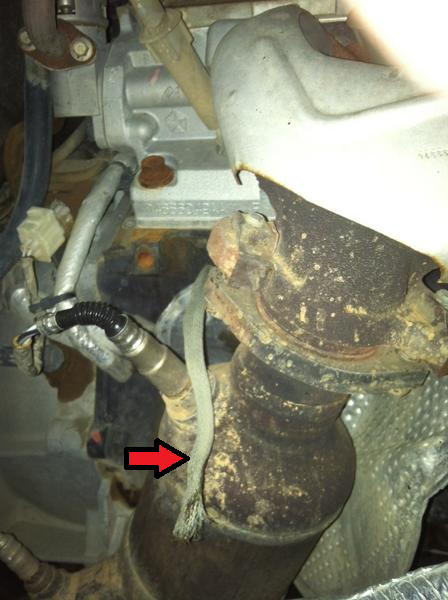
If the ground straps are in place without any corrosion but the starter will still not operate, refer to Steps 3, 4, and 5.
Step 3 – Safety switch
While safety features have been put in place to keep the car from starting while in gear, they will often act up at some point and cause a no-start issue. The JK 42RLE automatic transmission does not utilize a traditional neutral safety switch, but instead uses and internal transmission range sensor (TRS). The TRS uses a series of four contacts to detect which gear the transmission is in and, if not in park or neutral, prevents the car from starting. Unfortunately, these contacts can wear and prevent the car from starting when in park. In similar fashion, vehicles equipped with a manual transmission have a clutch safety switch that requires the driver to depress the clutch pedal to enable starting. This safety interlock switch can also act up and prevent the engine from cranking.
- If your vehicle is equipped with an automatic transmission, try either shifting into neutral or giving the shifter a slight nudge forward while in park to start the car. Many owners regularly apply pressure to the shifter in order to engage the TRS contacts and start the car.

Related Video: JK Wrangler Neutral Safety Switch
- For vehicles equipped with a manual transmission and 4WD, the car can be started in 4WD low gear without the need for using the clutch. Be prepared, as the car will move forward while cranking. The clutch pedal can also be firmly pumped a few times, which can occasionally allow the safety switch to make proper contact and allow the starter to operate. Additionally, some individuals opt to bypass the clutch switch entirely; however, it is recommended that the clutch switch be replaced if it is found to be the source of the problem.
Step 4 – Wireless control module (early JK models)
Early production model JKs have a tendency to lock-down the wireless control module (WCM), which is responsible for keyless entry, immobilizer functioning, and starting of the vehicle. Apparently the key can emit an electrostatic discharge when placed into the ignition and cause the WCM to essentially go into a security shutdown and prevent the engine from starting. The good news is that a workaround has been put in place to start the car if this problem occurs. The bad news is that it often indicates the WCM is faulty and needs to be replaced with an update unit.
- Per Technical Service Bulletin 08-007-08, open the TIPM (fuse box) located under the hood in the engine bay. Pull up on the ignition-off draw fuse (IOD). The fuse simply needs to be pulled up to the stop, not entirely removed. Wait 10 to 30 seconds before re-installing the fuse and attempting to start the vehicle. If the procedure allowed the engine to start, it confirms the WCM needs to be replaced. This procedure can be used temporarily to start the car until the module can be replaced.

Pro Tip
An ignition key with a faulty security chip may allow the engine to start, but will immediately die. If your key does not work, it will have to be reprogrammed at the dealer. Try using a spare key in the meantime.
Step 5 – Check starter
If you have made it this far but are still unable to crank the engine, the starter may be faulty. Starters can fail for a variety of reasons, ranging from prolonged cranking to impact damage or water ingestion. It is not necessary to test the starter at the solenoid as in years past, but can instead be completed at the TIPM.
- With the key on, remove the starter relay from the TIPM (as labeled in Figure 5).
- Check for power at terminal 30 or 87 with a digital multimeter or test light.
- If power is at either terminal, jump them together using a fused jumper wire. Be sure the car is in park before attempting to activate the starter.
- If the engine cranks, the starter is good.
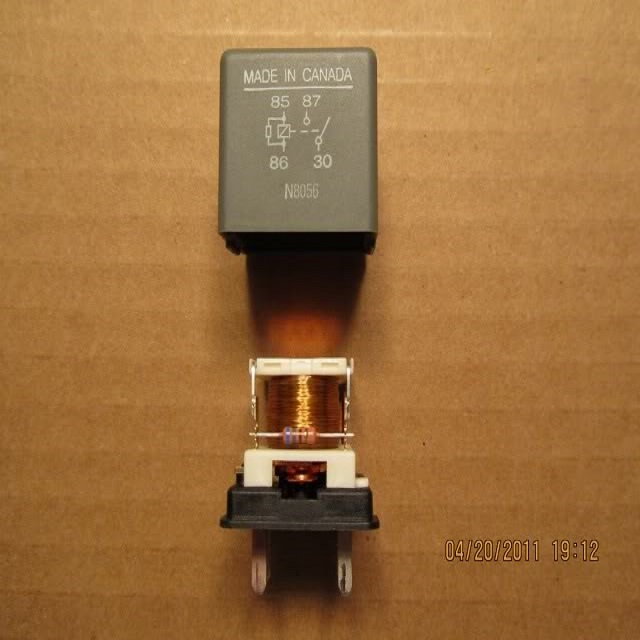
Figure 5. Labeled relay for use in identifying terminals when jumping. 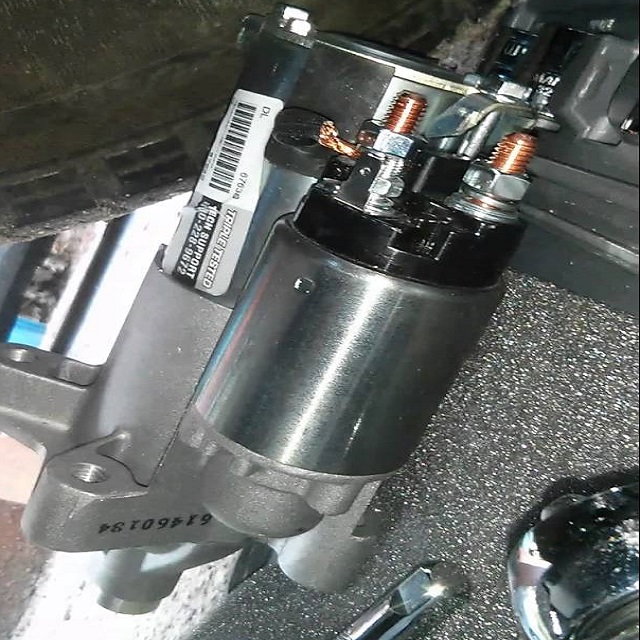
Figure 6. Jeep JK starter.
Related Discussions
- HELP! JK Won't Start - JK-Forum.com
- Neutral Safety Switch Fix - JK-Forum.com

